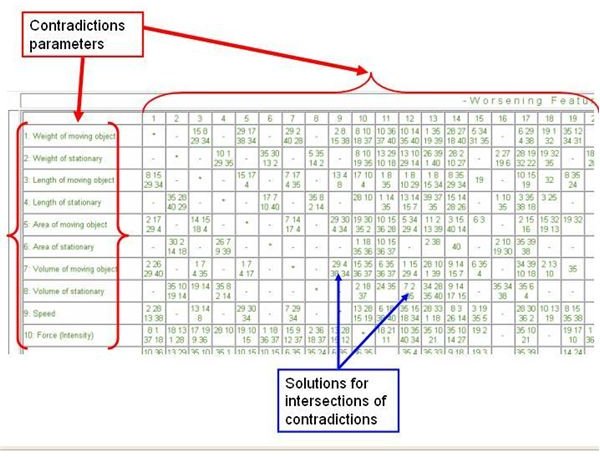Six Sigma TRIZ: One Example of How Six Sigma Works
TRIZ evolution
Genrich S. Altshuller, the Father of TRIZ, had found that around 90% of the problems faced by engineers are already solved somewhere else. On the basis of his observations, he came out with a set of theories for inventive problem solving, which are termed as “TRIZ.”
TRIZ provides a solution which eliminates the root cause rather than superseding it.
You will find guidance for use of Six Sigma TRIZ in the next paragraph.
Guidance for Use of Six Sigma TRIZ
For a technical systems, there will always be some useful effects (i.e. all the good results of system, like strength, stability etc.) and some harmful effects (like, costs, fuel consumed etc.). The ratio of these two is called Ideality.
In a normal problem solving approach, we try to improve a system by increasing useful effect, which often results in an increase of harmful effects, thus forcing us to make a trade off. For example, when we try to improve the power of a car, we make a trade off with fuel efficiency.
But, TRIZ removes the trade offs or contradictions and thus improves ideality. The TRIZ principle will lead to the development of new technology like hybrid cars, which will produce more power without reducing fuel efficiency.
Example for How Six Sigma Works with TRIZ
1. Identify the problem: Identify the technical system, operating environment, its useful effects, its harmful effects and expected ideal result.
For example, take the case of a paper packet of beverages with a square cross section as a system. The stack of such packets is 6 feet high, 6 feet long and 6 feet wide as the operating environment . Useful effects or functions of the packet is to contain the drink. Harmful effects or areas to be improved are the material cost. Expected ideal result is to get a packet that is strong enough to be stacked up to 6 feet high.
2. Restating the problem in TRIZ: Try to find out the technical contradictions or conflicts or trade-offs while looking for a solution.
For example, in our case of paper packet of beverages, if we try to decrease the cost (harmful effects) by reducing thickness then strength (useful effect) will also decrease and cannot take the load of a 6 feet high stack of such packets. So, in this case, the physical contradiction statement will be that the packet needs to be thicker for taking a load and thinner to reduce cost.
3. Look for previously solved similar problem: In this step you need the help of Altshuller’s patent monitoring experience. On the basis of his experience, he has standardized 39 engineering parameters which cause conflicts in general terms. He has created a table by placing all 39 parameters in grid; placing the possible solutions at the intersections of respective rows and columns. This table is called TRIZ matrix of contradictions. The table looks like the one shown below:
For example, in our case, contradictions are between “thickness” and “strength”. If you see the TRIZ matrix of contradiction table, you will find our contradictions best match with parameter # 4 (length of stationary objects) and parameter # 11 (stress or pressure). Go to the TRIZ matrix of contradictions here. Select the two fields of contradictions and click on “TRIZ matrix lookup”.
You will get the following solutions:
-
Parameter change i.e. change the physical properties i.e. change the paper material to get more strength without increasing thickness.
-
Segmentation i.e. change the packet wall by using corrugated paper or a bunch of small walls.
-
Curvature i.e. changes the square box section of the packet to circular cross section.
Conclusions
TRIZ is a systematic problem solving technique which eliminates the root cause of a problem rather than temporarily superseding it. TRIZ can be integrated with Six Sigma to make it more effective. Steps discussed in the above sample example for how six sigma works with TRIZ can be taken as a model problem solving approach for similar problem.
